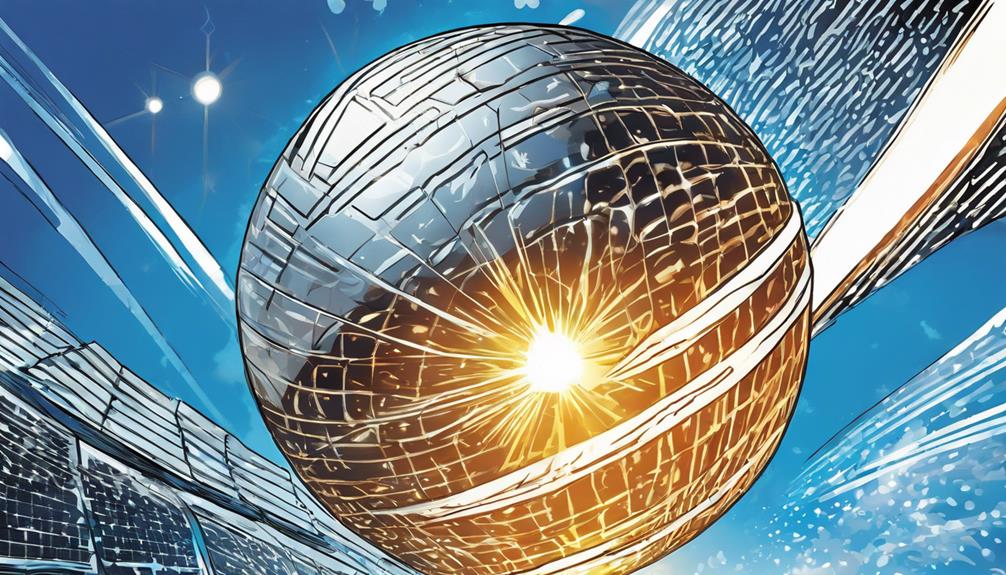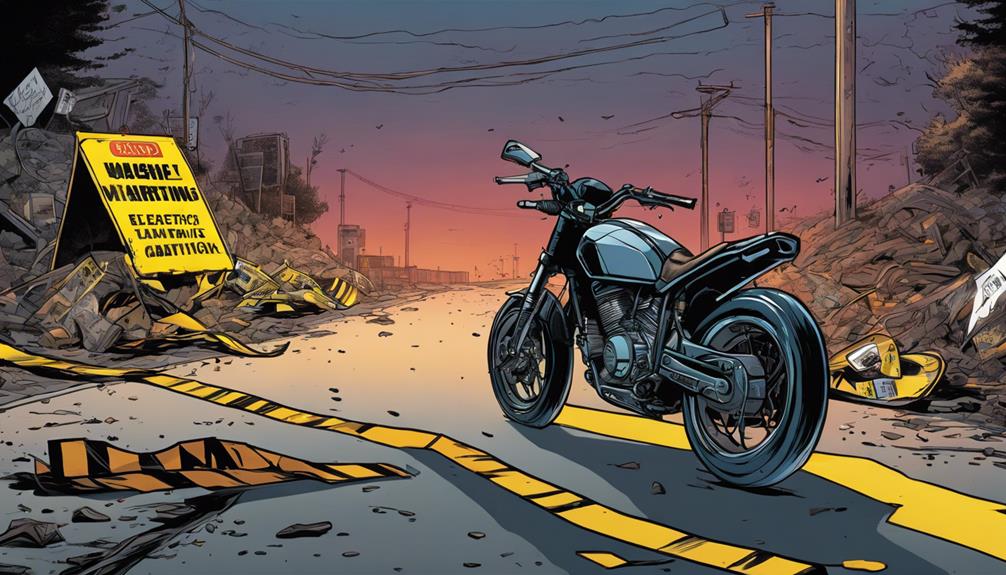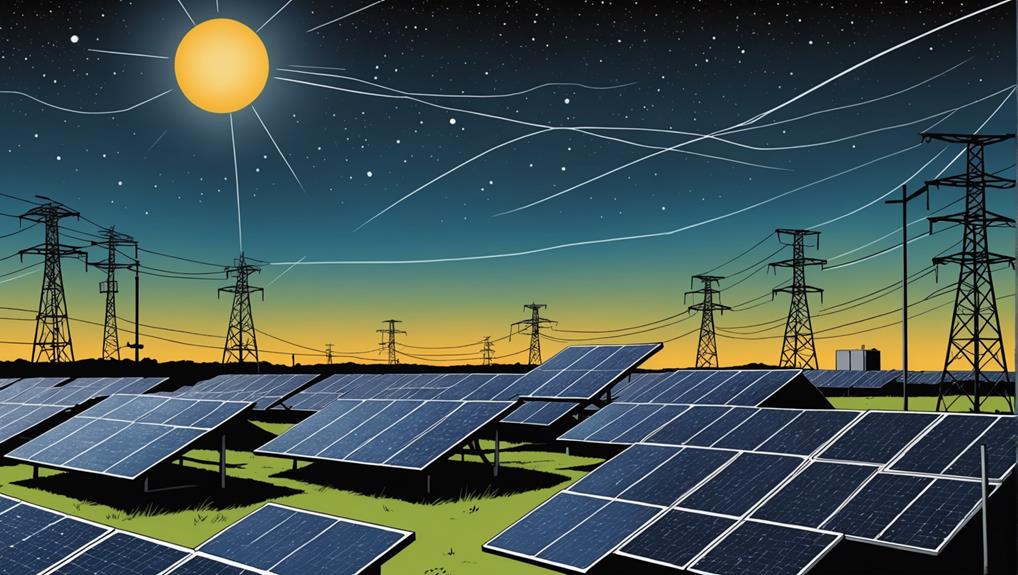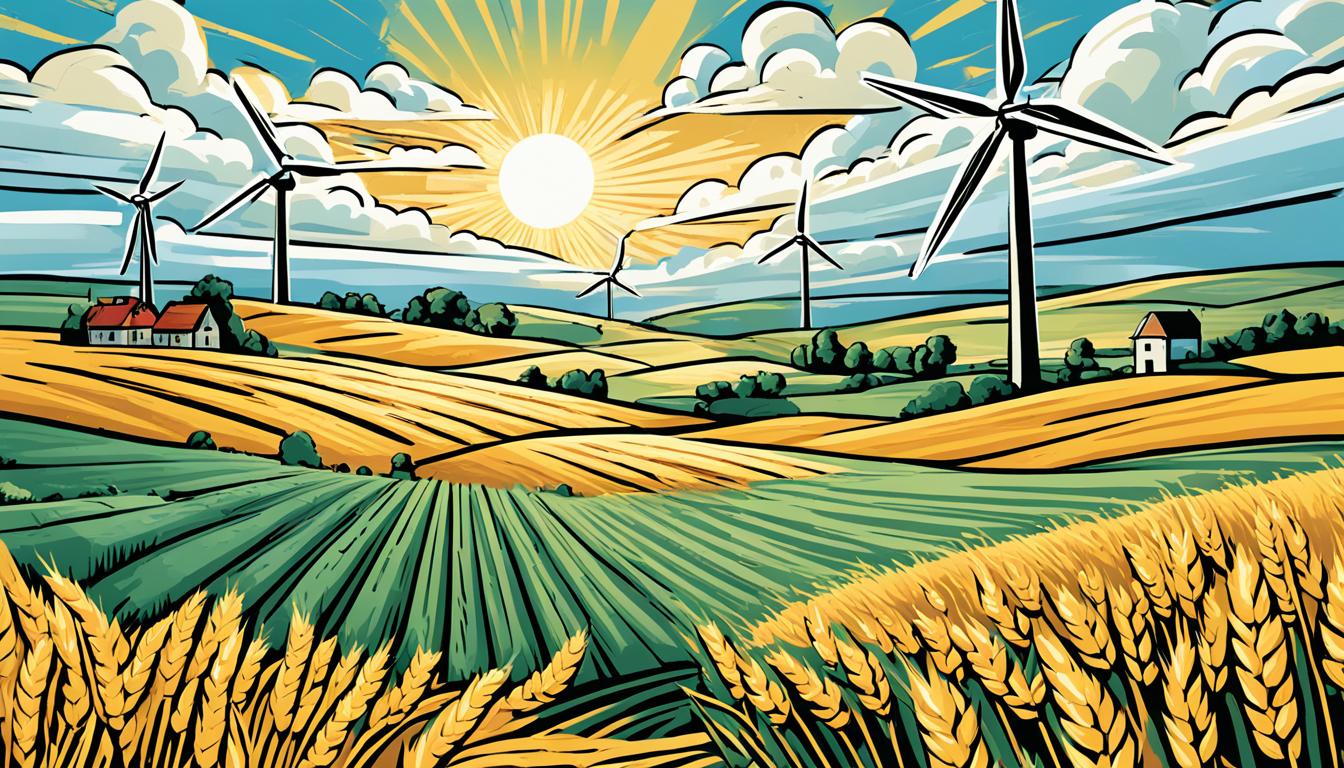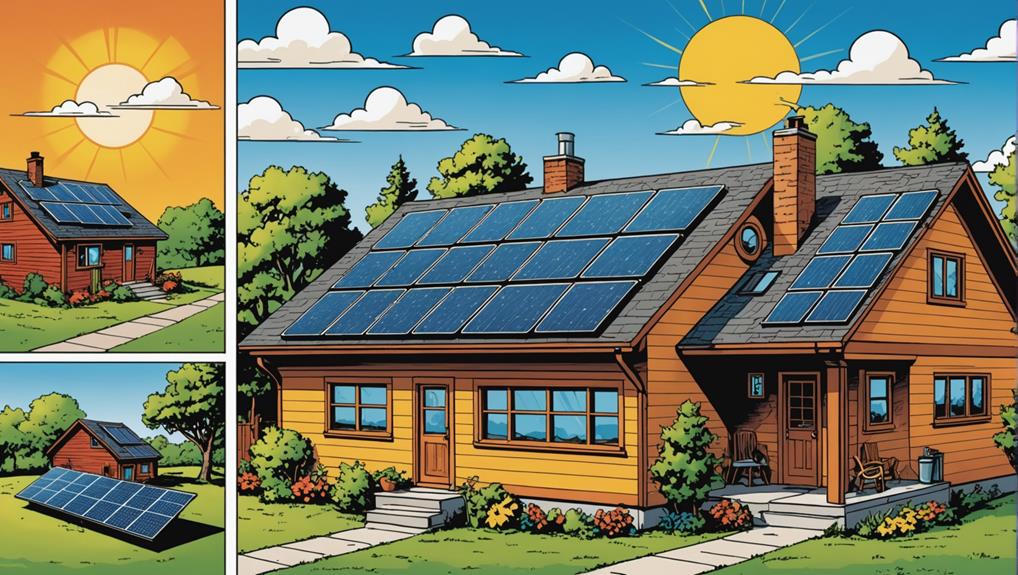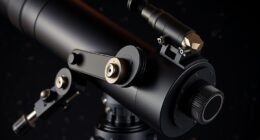I've always been fascinated by how solar panels convert sunlight into electricity. It all starts with the photovoltaic process, where photons from sunlight energize electrons in solar panels, creating an electric current. This process leads to direct current power transfer, which is then converted to alternating current power through inverters. But that's not all – the quality of solar panels, inverters, and even panel angle and orientation all impact energy transfer efficiency. As I dive deeper into the world of solar energy, I'm excited to uncover more secrets to maximizing energy efficiency and harnessing the full potential of solar power.
Key Takeaways
- Photovoltaic process converts sunlight into electricity by transferring energy from photons to electrons in solar panels, generating direct current (DC) power.
- DC power from solar panels is converted to alternating current (AC) power using inverters, making it suitable for home use and grid compatibility.
- Inverters optimize panel performance and system reliability, ensuring maximum energy harvest and seamless grid integration.
- Panel angle, orientation, and cleanliness impact energy conversion efficiency, while quality solar cells directly affect energy transfer efficiency.
- Understanding energy transfer factors, such as inverter function and optimization, enhances solar panel efficiency and maximizes energy production.
The Photovoltaic Process Unveiled
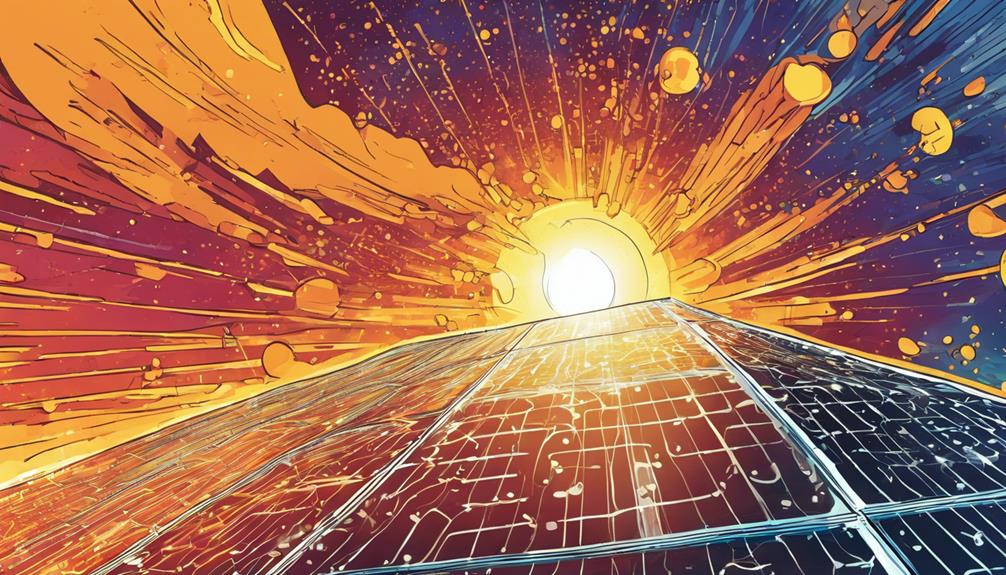
As I explore the world of solar energy, I'm fascinated by the photovoltaic process, which enables solar panels to convert sunlight into electricity through a fascinating dance of photons, electrons, and atoms.
It's amazing how photons in sunlight transfer energy to electrons in solar panels, allowing them to break free from their atoms and create an electric current. This process is at the heart of solar energy, and its efficiency depends on capturing and converting photons effectively.
The better the solar panel is at harnessing photons, the more electricity it can produce. It's incredible to think that something as simple as sunlight can be converted into usable electricity, and it's all thanks to the photovoltaic process.
Direct Current Power Transfer

I'm intrigued by the next step in the solar energy journey, where the photovoltaic process gives rise to direct current (DC) power transfer, allowing solar panels to channel electrical energy directly to devices or batteries.
This transfer occurs because the electrical conductivity of materials in the panels enables energy to flow. Higher efficiency panels convert more sunlight into electrical energy, making them more effective.
As DC power flows from the panels, it's crucial to take into account the quality of the panels and their components, as they directly impact energy transfer efficiency. By understanding how DC power transfer works, I can better appreciate the role it plays in harnessing the full potential of solar energy.
Harnessing Alternating Current Power

While DC power flows directly from solar panels, it's not suitable for home use, which is where alternating current (AC) power comes in – the standard for homes and businesses that requires conversion from the DC power generated by solar panels.
To make this conversion happen, inverters play an essential role. They take the DC power from the solar panels and convert it to AC power, ensuring it matches the grid frequency. This allows me to use the electricity generated by my solar panels to power my appliances or feed it back into the grid.
AC power offers higher energy transfer efficiency and grid compatibility, making it the ideal choice for my home.
Inverter Function and Optimization
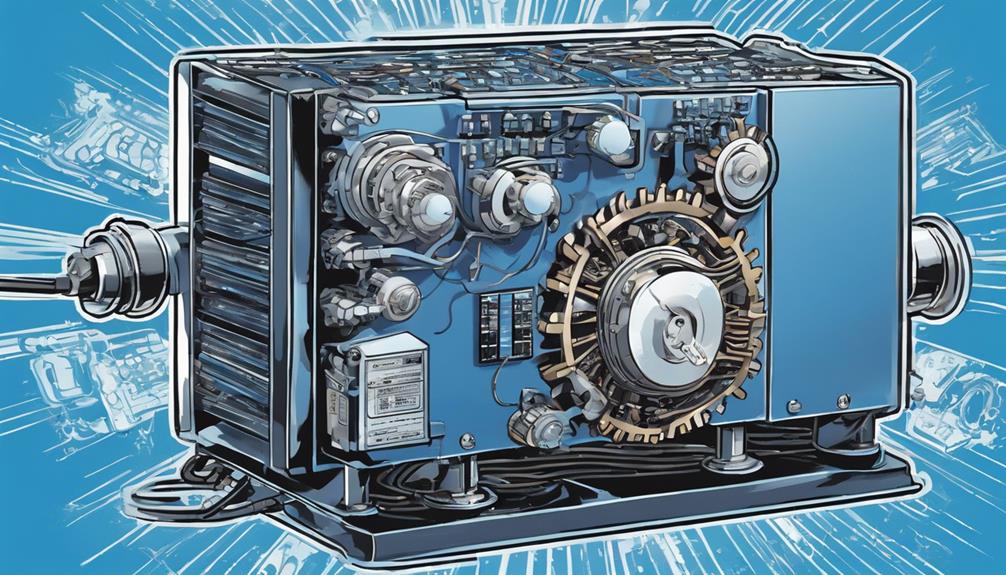
Inverters optimize individual panel performance and system reliability by converting DC power from each solar panel to AC power, ensuring maximum energy harvest and efficient grid integration.
As I explore further into the world of solar energy, I've come to realize the pivotal role inverters play in making solar power usable in our homes and businesses. By converting DC power to AC power, inverters enable seamless integration with the grid, allowing us to feed excess energy back into the system and offset our electricity bills.
Additionally, microinverters take it a step further by optimizing individual panel performance, ensuring that each panel operates at its maximum potential, even in partial shading or mismatch conditions. This level of precision is essential in unleashing the full potential of solar energy.
Maximizing Energy Efficiency Factors

As I explore further into the world of solar panels, I'm intrigued by the complexities of energy transfer.
Now that we've optimized the inverter's role in energy transfer, let's examine the factors that impact the efficiency of solar panel energy transfer.
It's surprising how much of a difference panel angle and orientation can make in sunlight absorption.
A clean panel is also vital, as dirt and debris can greatly reduce energy conversion.
The quality of solar cells is another crucial factor, as it directly affects energy transfer efficiency.
Frequently Asked Questions
Can Solar Panels Generate Electricity on Cloudy Days?
'Yes, I can confirm that solar panels can generate electricity on cloudy days, although the energy output is notably lower due to reduced sunlight intensity, making it essential to optimize panel angle and cleanliness.'
How Does Solar Panel Maintenance Affect Energy Output?
'As I scrutinize solar panels, I realize that diligent maintenance magnifies energy output. Dusty panels diminish efficiency, while clean ones capitalize on sunlight, ensuring excellent energy transfer and a brighter bottom line.'
Do Solar Panels Work Better in Hot or Cold Climates?
I've found that solar panels work more efficiently in cold climates, as high temperatures can reduce energy output. In hot climates, panels can overheat, decreasing their ability to convert sunlight into electricity.
Can I Use Solar Panels to Charge My Electric Vehicle?
As the sun fuels my electric dreams, I can confidently say yes, I can use solar panels to charge my electric vehicle. The DC power from the panels is converted to AC by an inverter, making it compatible with my car's charging system.
Are Solar Panels Compatible With All Electrical Systems?
I've wondered if solar panels can integrate seamlessly with all electrical systems. Fortunately, inverters convert DC power to AC, making solar energy compatible with most home and business electrical systems.
What Are the Best Ways to Maximize Solar Panel Energy Transfer Efficiency?
When looking to maximize solar panel energy transfer efficiency, consider positioning panels towards the sun, keeping them clean and unobstructed, and using high-quality materials. Installing a tracking system can also optimize solar panel energy transfer efficiency by adjusting the angle throughout the day to capture maximum sunlight.
Conclusion
As I reflect on my journey into the world of solar panel energy transfer, I'm struck by the stark contrast between the simplicity of harnessing sunlight and the intricacy of the process that makes it possible. It's a dance of photons, electrons, and currents, where every step matters.
Yet, amidst the complexity, lies a profound beauty – the promise of a sustainable future, powered by the limitless energy of the sun.
